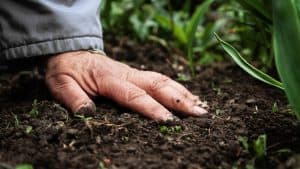
One of the songs I have always loved is When I Go by Dave Carter and Tracy
Grammar, written two years before Dave’s untimely death at age 49.
Sigh, mournful sister, whisper and turn, I will rattle like dry leaves when I go Stand in the mist where my fire used to burn, I will camp on the night breeze when I go And should you glimpse my wandering form out on the borderline Between death and resurrection and the council of the pines Do not worry for my comfort, do not sorrow for me so All your diamond tears will rise up and adorn the sky beside me when I go
We all have different beliefs about what happens after we
die. We also have different ideas about what should happen to our bodies.
Many of us have religious beliefs that guide us. It is
worth considering possibilities beyond traditional burial and learning about
the options. When we did, my husband and I immediately knew what our choice
would be. First, let me share a bit about some of the many options available
around the globe.
Cremation
Cremation is used by 99% of people in Japan and by 75% in
Britain. In the US, in 2016, numbers rose to slightly over 50% and continue to
grow.
Remains can be taken home in urns, spread in nature, or placed in crypts. Cremation is less costly and causes less damage to the environment than a traditional burial.
Green Burial
Sites
Green
burial sites are environmentally
friendly places where people can be buried while preserving natural habitats
and reducing carbon emissions.
People are not embalmed and are buried in a natural way in
shrouds without caskets. In some cases, a stone is chosen to identify the spot,
though GPS coordinates may be the family’s best bet.
Home Funerals
and Burial
In years past around the world, families kept their loved ones’ bodies at home. Many don’t realize that keeping a body at home is still legal in the US and many other countries. Families can keep their loved ones at home for a few days using dry ice as a temporary preservative.
Each locality and state has legal requirements for burial
with specific guidelines (e.g., New Hampshire states that the body must be at
least 3.5 feet deep, 100 feet from a dwelling, and 50 feet from water sources).
Other unique ancient and new
traditions include:
Burial at Sea
Some organizations specialize in natural burial at
sea (in a shroud), allowing
the body to decompose or be consumed by sea animals. Itis a natural burial if done in a way that benefits the environment
– and without formaldehyde.
Sky Burial
Vajrayana Buddhists in Mongolia and Tibet believe the soul
leaves the body and moves on. To return
the body to the earth, they chop it into pieces
and place it on a mountaintop, exposed to the elements and the vultures.
Coral Reef Balls
Cremated remains can be placed inside concrete
coral reef balls and become attached to a
coral reef in the ocean. The balls help repair damage to coral reefs and
regenerate the ecosystem, providing new habitat for fish and other sea life.
Burial Beads
In South Korea, due to limited space, a law requires
bodies to be removed from graves after 60 years. Cremation has become more
common, but some families choose to have their loved ones’ remains compressed
into gem-like beads, available in different
colors. They can be kept at home and displayed.
Fantasy Coffins
In Ghana, some people are buried in coffins
decorated and shaped to represent their work or
something they loved in life.
Our Choice:
Donating Our Bodies to Medical Research
When my husband Rito and I learned about the “willed
body” option, we immediately knew this
was our choice. As I have been grappling with cancer, I have been so grateful
for the medical advances that have kept me alive.
Everyone has received the gift of healing from medical
research, extending our lives with discoveries and interventions. The training
of our doctors and the research benefits greatly from bodies that have been
donated to science.
This is different from organ and tissue donation programs.
As seniors, we are unlikely to have organs in top condition to donate.
In the past, dubious methods were used to obtain cadavers,
including body snatchers and the sale of murder victims. Now, laws require
legal permissions and procedures.
Many hospitals and medical schools have body donation
programs. Uses include cadavers for training surgical students and research for
new technologies. Each “willed body” program has its own policies.
A simple process includes filling out and submitting online
forms, requiring only your signature along with those of two witnesses. Bodies
in nearly all states of health are accepted.
UCSF, our local medical university, picks up the body with
no cost to us. After use, they cremate and spread the ashes at sea, not
returning them to the family. In some programs, cremated remains are eventually
returned to the family.
Rito always said that he did not want remaining family to
bear the burden of funeral costs, so we liked the thought that our family
wouldn’t have any expenses. Also, I learned that there is a shortage of bodies,
which makes the contribution more significant.
Once we submitted our forms, we informed our children and
received cards to carry in our wallets. It is a good feeling to have made
informed choices together.
The Five Wishes:
Make Your Choices Ahead and Make Your Wishes Known
It is worth taking the time to consider your physical,
emotional, and spiritual needs in the event of sickness, during dying, and
ultimately after death.
Using a Five
Wishes Form with specific questions helps
you reflect on how you want to be treated. It also can be used to guide family discussions
and share feelings and desires.
I close with a quote from the Final Passages website:
“The nature of life includes the eventual miracle of death, a rite of passage that
deserves dignity and loving care.”
How would you like your body to be treated after death?
Have you considered the question? We would love to hear your thoughts about
your wishes and choices.





